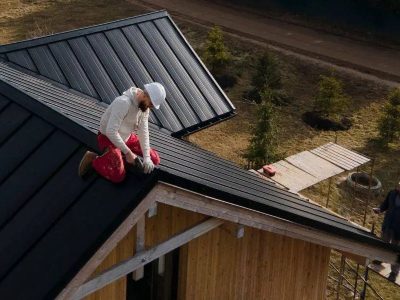Maintaining a durable and reliable roof is essential for protecting your home from the elements and ensuring its structural integrity. Whether you’re dealing with minor repairs or considering a complete roof installation, understanding the process and key considerations can help you make informed decisions. This guide covers everything you need to know about roofing repair and installation.
1. Assessing the Need for Roofing Repair
Before proceeding with any roofing repair or installation project, it’s crucial to assess the condition of your current roof. Here are some signs that indicate you may need roofing repair:
- Leaks and Water Damage: Water stains on ceilings or walls, damp spots in the attic, or visible water penetration during rain indicate potential roof leaks.
- Missing or Damaged Shingles: Shingles that are cracked, curling, or missing altogether can compromise the roof’s ability to protect against weather.
- Sagging or Uneven Areas: These could be signs of structural issues or water damage.
- Age of the Roof: Most roofs have a lifespan of 20-25 years depending on materials. If your roof is nearing this age, it may be time for replacement rather than repair.
2. Roofing Repair Techniques
Depending on the extent of damage and the type of roofing material, various repair techniques may be used:
- Replacing Damaged Shingles: Individual shingles that are cracked or missing can be replaced to prevent further damage.
- Sealing Leaks: Identifying the source of leaks and applying appropriate sealants or flashing to prevent water penetration.
- Repairing Flashing: Flashing around chimneys, vents, and skylights can degrade over time and may need to be repaired or replaced.
- Patching Flat Roofing Materials: For flat roofs, repairing or patching membrane materials to address cracks or tears.
3. Hiring a Professional Roofing Contractor
For complex roofing repairs or installations, it’s advisable to hire a professional roofing contractor. Here’s why:
- Expertise and Experience: Roofing contractors have the knowledge and experience to assess roof conditions accurately and recommend appropriate solutions.
- Safety: Roofing work can be hazardous. Professionals have the necessary safety equipment and training to work safely at heights.
- Quality Materials and Workmanship: Contractors have access to high-quality materials and can ensure proper installation or repair techniques to maximize the roof’s lifespan.
4. Roof Installation Considerations
If your roof is beyond repair or nearing the end of its lifespan, you may need to consider roof installation. Here are key considerations:
- Choosing the Right Roofing Material: Options include asphalt shingles, metal roofing, tile, slate, and more. Each material has different benefits in terms of durability, aesthetics, and cost.
- Roofing Design and Style: Consider how the new roof will complement your home’s architecture and enhance its curb appeal.
- Energy Efficiency: Some roofing materials offer enhanced energy efficiency, which can reduce heating and cooling costs over time.
- Long-Term Maintenance: Understand the maintenance requirements of different roofing materials to ensure longevity and performance.
5. Benefits of Professional Roof Installation
While DIY projects can be tempting, roofing installation is best left to professionals for several reasons:
- Warranty Coverage: Many roofing materials come with warranties that may require professional installation to be valid.
- Code Compliance: Roofing professionals are familiar with local building codes and regulations, ensuring that your roof installation meets safety and legal requirements.
- Efficiency and Timing: Professional roofers can complete installation efficiently, minimizing disruption to your daily routine and ensuring timely completion.
Conclusion
Whether you’re dealing with roofing repair or considering roof installation, understanding the process and choosing the right professionals can make a significant difference in the outcome. Regular maintenance and timely repairs can extend the life of your roof and protect your home from potential damage. When it’s time for installation, selecting the appropriate roofing material and ensuring professional installation will enhance your home’s curb appeal, energy efficiency, and overall value.
By following this guide and consulting with experienced roofing professionals, you can ensure that your roofing repair or installation project is completed successfully, providing peace of mind and long-term protection for your home.













Comments